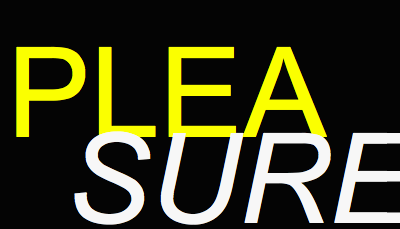 |
| Ever-bless good-good by Leasho Johnson, mixed media on canvas, 37" x 54". |
BLINK TOO quickly and one might miss the idiosyncrasies in these works. In one piece, two neon orange avatars, rendered without conventional gender and sexual markers, are wrapped around each other in a loving embrace. They are clearly a couple. Here, Jamaican artist Leasho Johnson implies that dancehall is a space where queer Caribbean identities do exist and can be seen. He asserts that those marginalized identities ought to be made visible, whether or not mainstream or even the dancehall subculture is ready or willing to acknowledge them.
Johnson expands on his narrative of dancehall as counter-culture. In his debut solo exhibition Belisario and The Soundboy (which ran from February 4- 24 at NLS, Kingston, Jamaica) 18th century paintings and art by figures such as Isaac Mendes Belisario are mashed with Johnson's signature neon orange characters.
Individually and collectively, these pieces ridicule the constipated male/female, masculine/feminine, and heterosexual/homosexual binaries that frame the island's cultural imagery and national identity. Ultra-conservative, cis-heteronormative Jamaica and its constricting preoccupation with all things straight is the butt of a huge joke here.
According to the National Gallery of Jamaica, Isaac Mendes Belisario (1795-1849) was, "the first documented Jamaican-born artist". A popular landscape painter, he created some of the most picturesque images of colonial Jamaica, despite its ills of slavery and cultural imperialism. But there are other references in the show as well such as the painters JB Kidd and William Clarke, as well as photography by Duperley and Sons.
 |
| Photo by Sasha Solomon |
Belisario and The Soundboy opens with 'Cocktales & Pum-pum', a mixed media sculptural tableau which includes pieces such as 'Di Good Hole', 'Gumption', 'You Can't Twerk on Sundays', '6:30', and more. Mischievous and cheeky, these objects celebrate the sexual freedom of dancehall's women. They big up di gyal dem - the acrobatic, daring, and confidently sexual black Jamaican women who negotiate power and femininity in the dancehall space.
In 'Ever-bless good-good', two black Jamaican women meet at a sort of crossroads in the lush Jamaican countryside. It's a riotous image, positioning dancehall as a space for the sexual to be enacted and performed in the presence of the respectable.
'Rude to your parents' is a broad declaration of the power of black female sexuality and a reclamation of the black female body. All in all, it's a Caribbean time warp of the first order, where Johnson radically changes the lens of time, culture, identity and history.
 |
| Rude to your parents, mixed media on canvas, 37" x 54. |
Overall, Johnson creates a space for a difficult, but necessary conversation about who or what systems get to decide which Jamaican identities, cultures and histories are seen and documented. Is it possible for dancehall to be a space for intersectional politics to be seen as a site for queer culture? How do we go about choosing which aspects of our culture and history are worth documenting? By interlacing his neon orange dancehall avatars with these famous images of Jamaican life, he emphasizes that dancehall is as much a part of everyday Jamaican culture, and is even more so because it is the creation of the Jamaicans who are the progeny of those from the colonial era who are immortalized in much Jamaican art.
Still, 'Ital dish/ Walk-like-a-dog' explores dancehall as a problematic space. The artist creates a world where the neon orange visual of 'fish', the derogatory word for a homosexual man or one who is effeminate, signifies an existence and a reality that is as much a part of our pre-colonial, colonial as it is the post-colonial and post-independent lives. Even in subcultural spaces, these identities are affirmed as real and tangible.
 |
| Ital dish/Walk-like-a-dog, mixed media on canvas, 40" x 64". |
Johnson suggests we have sought to erase black queer identities in our conception of the working class and the communities from which dancehall originates. With Belisario and The Soundboy, he shows he is here to remedy this amnesia. He creates one continuous stream of culture, history and identity. He is here to upset.
Sasha Solomon is a Jamaican writer who recently participated in the Bocas Lit Fest / British Council art criticism workshop lead by Claire Armitstead and Gene Moreno in January at the University of the West Indies.
Sasha Solomon is a Jamaican writer who recently participated in the Bocas Lit Fest / British Council art criticism workshop lead by Claire Armitstead and Gene Moreno in January at the University of the West Indies.




















No comments:
Post a Comment